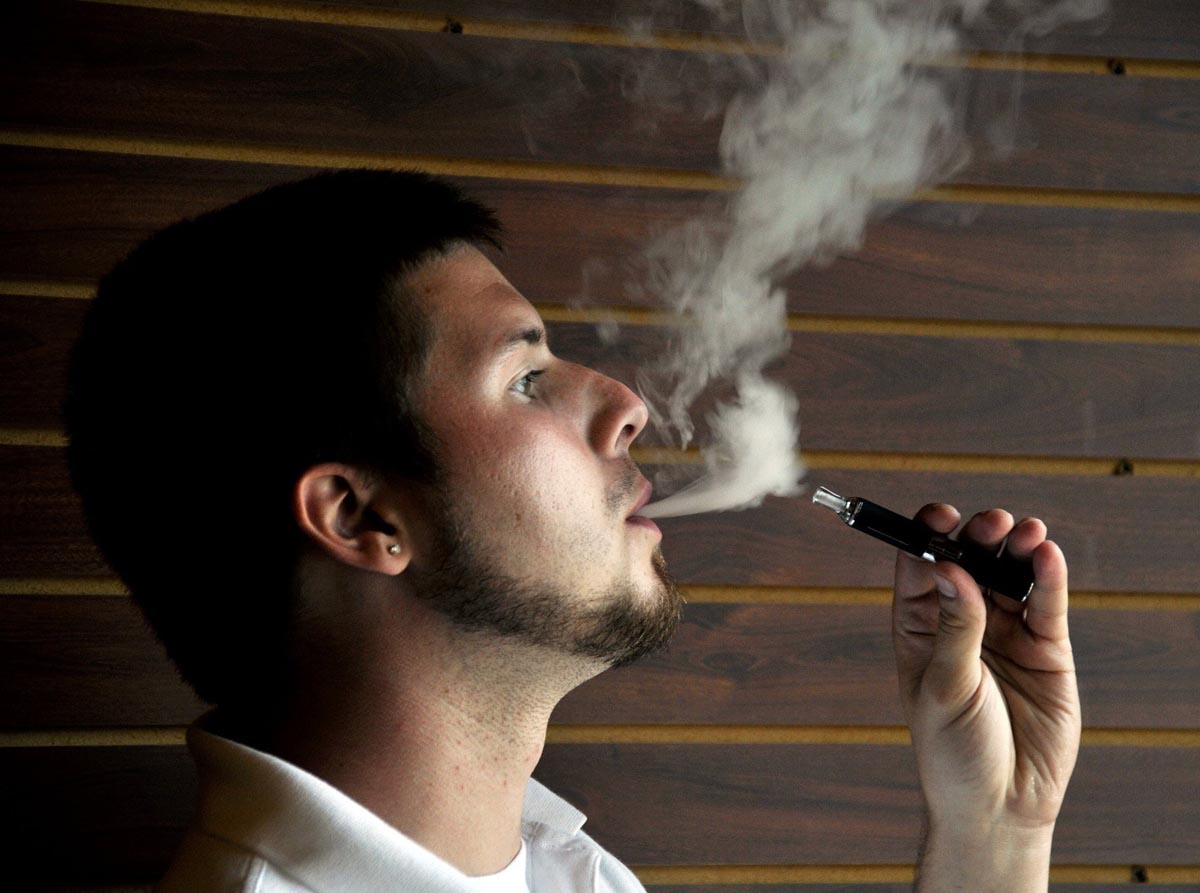Teenagers Who Try E-Cigarettes Also Try Smoking, Study Finds

Teenagers who try e-cigarettes are more likely to try cigarettes and other tobacco products, a new study finds.
It’s not proof that “vaping” leads to smoking — but it’s strong evidence that it might, experts said. And it’s an argument in favor of more closely regulating these increasingly popular products, they said.
“While we cannot conclude that e-cigarette use directly leads to smoking, this research raises concerns that recent increases in youth e-cigarette use could ultimately perpetuate the epidemic of smoking-related illness,” said Adam Leventhal of the Keck School of Medicine at the University of Southern California, who led the study.
His team surveyed more than 2,500 Los Angeles-area 9th graders who said they had never tried any tobacco products when they started high school, six months later and again at the start of 10th grade.
More than 200 of the kids said they had tried e-cigarettes, and six months later, nearly a third of them — 31 percent — said they had also tried a traditional tobacco product such as a cigarette or a cigar in the past six months. Only 8 percent of the kids who never tried vaping had.
A year later, 25 percent of the teenagers who admitted to vaping said they’d also smoked tobacco in the past 6 months, compared to 9 percent of non-vapers.
This could simply show that some kids are more rebellious than others, or keen to try new things, the researchers said. Or it could be some are more easily seduced by nicotine — the active ingredient in both e-cigarettes and traditional combustible tobacco products.
“Adolescents who enjoy the experience of inhaling nicotine via e-cigarettes could be more apt to experiment with other nicotine products, including smokeable tobacco,” Leventhal said.
But other experts noted that there is no reason for someone as young as 14 to use any such product.
The study “provides troubling new evidence that use of electronic cigarettes by youth who had not previously smoked could lead to use of cigarettes and other smoked tobacco products,” said Matthew Myers, president of the Campaign for Tobacco-Free Kids.
“This study indicates that e-cigarettes are introducing many kids to use of and possible addiction to nicotine. It also adds to concerns that e-cigarettes could serve as a gateway to use of other tobacco products, including regular cigarettes.”
And the study shows that teenagers are trying e-cigarettes more frequently than traditional tobacco products.
“There is ample evidence that e-cigarettes are marketed in ways that appeal to children and adolescents. Prompt, effective action is needed to protect youth and reduce the demand for e-cigarettes by nonsmokers of all ages,” Dr. Nancy Rigotti of the Massachusetts General Hospital and Harvard Medical School wrote in a commentary.
“While teen tobacco use has fallen in recent years, this study confirms that we should continue to vigilantly watch teen smoking patterns,” said Dr. Nora Volkow, director of the National Institute on Drug Abuse, which helped pay for the study.
“Parents and teens should recognize that although e-cigarettes might not have the same carcinogenic effects of regular cigarettes, they do carry a risk of addiction.”
The Food and Drug Administration says it plans to regulate e-cigarettes, along with cigars and other tobacco products.
The FDA says it’s not sure what’s even in e-cigarettes, which deliver nicotine in a heated mist of water, glycerin and propylene glycol.
Electronic cigarette use among American middle and high school students jumped to 13.4 percent in 2014 from 4.5 percent in 2013, according to the Centers for Disease Control and Prevention. Cigarette use over the same period fell to 9.2 percent from 12.7 percent.












